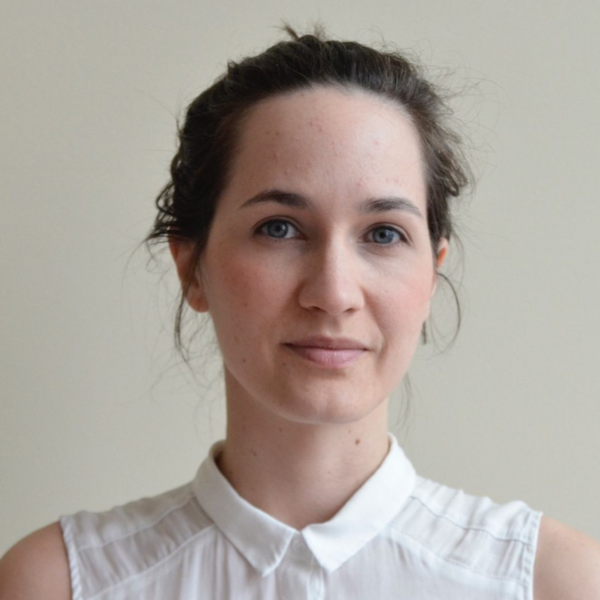Breadcrumbs
- Home
- About Us
- Latest News
- Discussing gender gaps in radiology and healthcare with Dr. Paula Alcaide Leon
Discussing gender gaps in radiology and healthcare with Dr. Paula Alcaide Leon

This March celebrated both Brain Health Awareness Month and International Women’s Day, offering an important opportunity to look at the intersection of gender disparities and healthcare. As many facets within healthcare have historically been male-dominated, Medical Imaging Assistant Professor and Neuroradiologist, Joint Department of Medical Imaging (JDMI), Dr. Paula Alcaide Leon understands the importance of having more women physicians, especially in radiology.
Originally from Spain, Dr. Alcaide Leon completed her Medical School in Medicine and Surgery at the University of Sevilla and did her residency in Radiology and Medical Imaging at the Hospital Virgen del Rocio in Sevilla, Spain. Not long after, she obtained a Master’s Degree in Interventional Neuroradiology at the University of Barcelona before coming to Canada to do a Clinical Fellowship in Diagnostic Neuroradiology at University of Toronto (UofT).
While working in general medicine, Dr. Alcaide Leon found herself overwhelmed by the suffering she would see with her patients and decided she wanted to explore other areas within healthcare. “My best friend’s mom was a radiologist, which is rare because there aren’t that many women in the field,” she recalls. “So, it was great for me to have this role model who ultimately convinced me to go into radiology.”
Noting the historic deficit of women in radiology, Dr. Alcaide Leon stresses the importance of not only women role models in medicine, but also the need for a critical mass to influence policies and remove persisting barriers for women to work in different areas of healthcare. This includes improving maternity leave and reducing the pay disparity between women and men radiologists and services provided, like breast imaging versus neuroradiology, which are female and male dominated, respectively.
When it comes to determining why disparities such as the gender pay gap still exist in healthcare, it’s difficult to pinpoint an answer. But with physicians and researchers like Dr. Alcaide Leon continuing to look into gender disparities, we can be optimistic that the road is being paved for more women in medicine and radiology. Part of her research so far has found that women radiologists were less likely to make significant radiological mistakes and had a narrower scope of practice than their male counterparts.
“I think this research will help women advocate for themselves and have more confidence in our abilities,” she says.
While having a role model was a big part of why she got into radiology, something that Dr. Alcaide Leon loved about the practice was the investigative aspect of it. “You’re basically solving a case, finding a diagnosis to help your patient.” But it was the complexities of the brain that drew her into neuroradiology. “I was always interested in the brain and how it works; that’s where the soul is,” she says. “Working with the brain, it involves a lot of reasoning and is often like putting the pieces of a puzzle together.”
Dr. Alcaide Leon has amassed an impressive career of clinical and research work in neuroradiology, starting in Spain in both Sevilla and Barcelona where she worked as a staff neuroradiologist in private practice and hospitals, a consultant neuroradiologist for a telemedicine clinic and as a neuroradiology researcher. Since moving to North America, she has worked as a clinical and research fellow at UofT and has since continued her work as a neuroradiologist at Toronto Western Hospital. She also worked as a radiology research specialist in California and as a neuroradiology research fellow at Toronto’s University Health Network (UHN).
In her current role as neuroradiologist, Dr. Alcaide Leon focuses on clinical translation of advanced MRI techniques, an integral part of identifying and managing brain disease. “Neuroradiology is essential for not only diagnosis, but also treatment planning and monitoring of numerous neurological conditions,” she explains. “Even when neurologists are pretty certain about a diagnosis, in most cases, imaging is needed to confirm it.”
On top of this, Dr. Alcaide Leon has also implemented new techniques within her practice. “Although there are many new publications on new MRI techniques, very few actually make it to the clinic,” she explains. “Implementation in clinical practice requires techniques that are robust, reliable and truly useful.”
Dr. Alcaide Leon has managed to bring two new techniques to her clinical practice, including perfusion MRI for differentiation between radiation necrosis and tumor progression and High-Resolution Susceptibility Map-Weighted Imaging for detection of neurodegenerative parkinsonism. The first technique helps radiologists differentiate brain inflammation related to prior radiation from tumor recurrence. The second can reliably distinguish Parkinson disease from other disorders like essential tremor or drug-induced parkinsonism.
Going forward, Dr. Alcaide Leon is excited to continue working with new techniques to assess the blood-brain barrier, a functional barrier that protects brain tissue from toxins and other substances found in blood. “Increased blood-brain barrier permeability plays a role in multiple diseases, including Alzheimer’s disease, epilepsy and concussion,” she explains. “Currently, I’m working with the Uludag’s Lab in a novel method to assess the blood barrier without contrast administration.” She is also working with MI Associate Professor and Deputy Head, JDMI Education, Dr. Eric Bartlett on a new teaching tool, a Reporting Simulator, that incorporates AI technology for personalized feedback.
Since working in Canada, Dr. Alcaide Leon has conducted numerous research projects in a variety of topics, including neuro-oncology and gender disparities in radiology practice, among others.